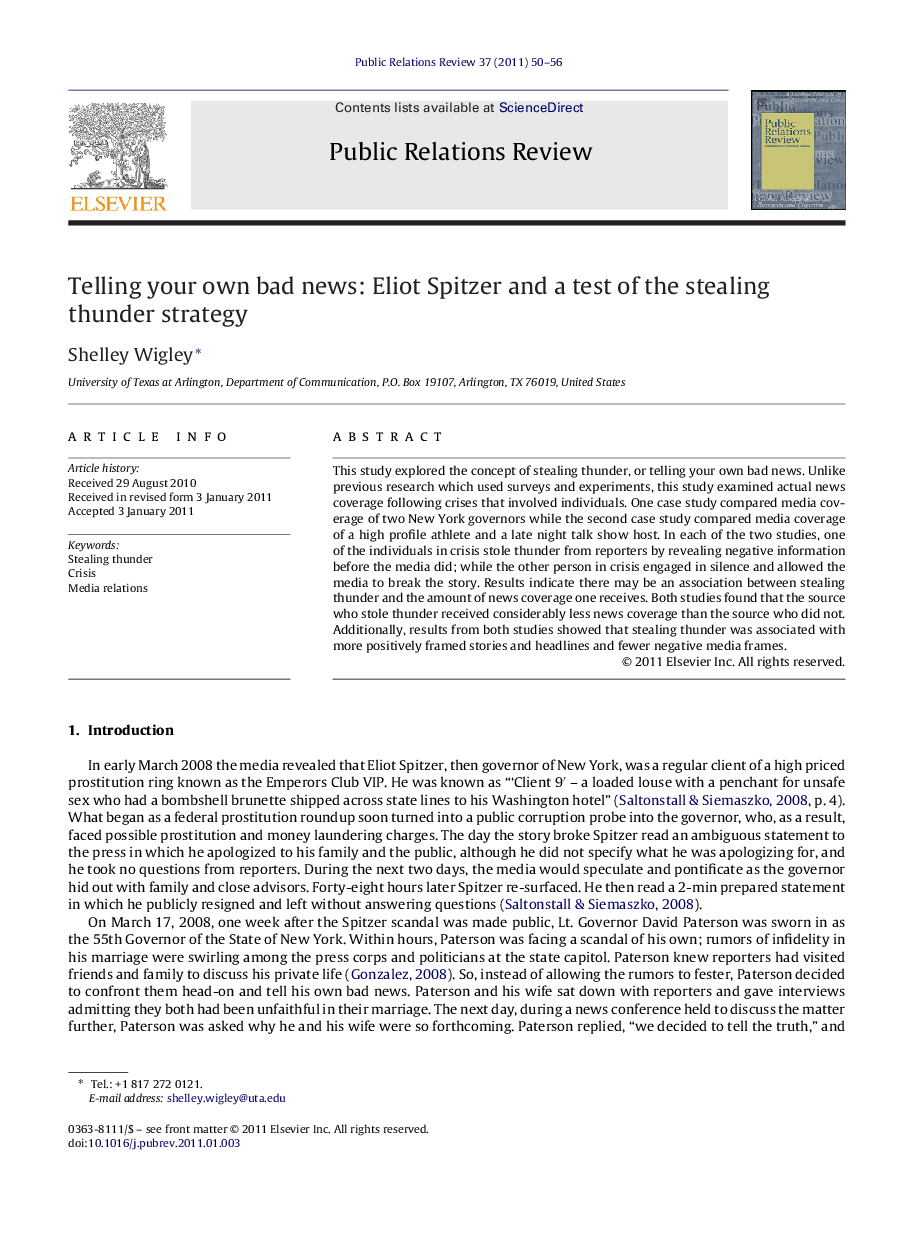| کد مقاله | کد نشریه | سال انتشار | مقاله انگلیسی | نسخه تمام متن |
|---|---|---|---|---|
| 139654 | 162510 | 2011 | 7 صفحه PDF | دانلود رایگان |

This study explored the concept of stealing thunder, or telling your own bad news. Unlike previous research which used surveys and experiments, this study examined actual news coverage following crises that involved individuals. One case study compared media coverage of two New York governors while the second case study compared media coverage of a high profile athlete and a late night talk show host. In each of the two studies, one of the individuals in crisis stole thunder from reporters by revealing negative information before the media did; while the other person in crisis engaged in silence and allowed the media to break the story. Results indicate there may be an association between stealing thunder and the amount of news coverage one receives. Both studies found that the source who stole thunder received considerably less news coverage than the source who did not. Additionally, results from both studies showed that stealing thunder was associated with more positively framed stories and headlines and fewer negative media frames.
Research highlights▶ This study explored the concept of stealing thunder, or telling your own bad news. ▶ Results indicate there may be an association between stealing thunder and the amount of news coverage. ▶ Sources who stole thunder received considerably less news coverage than those who did not. ▶ Stealing thunder was associated with more positively framed stories and headlines.
Journal: Public Relations Review - Volume 37, Issue 1, March 2011, Pages 50–56